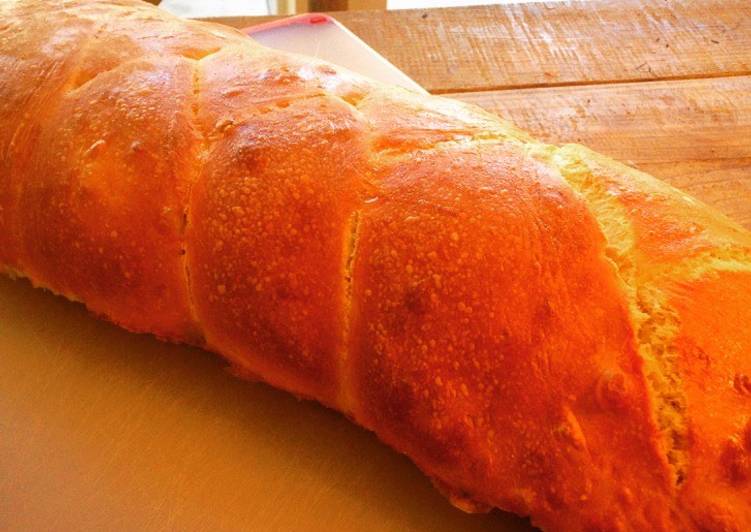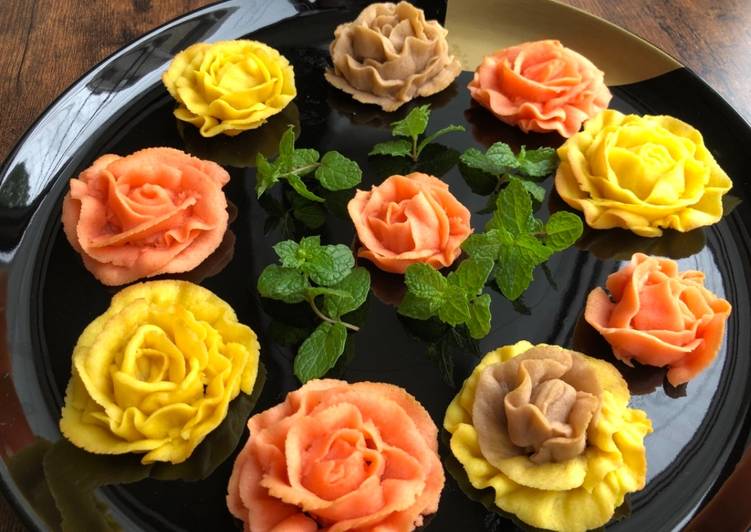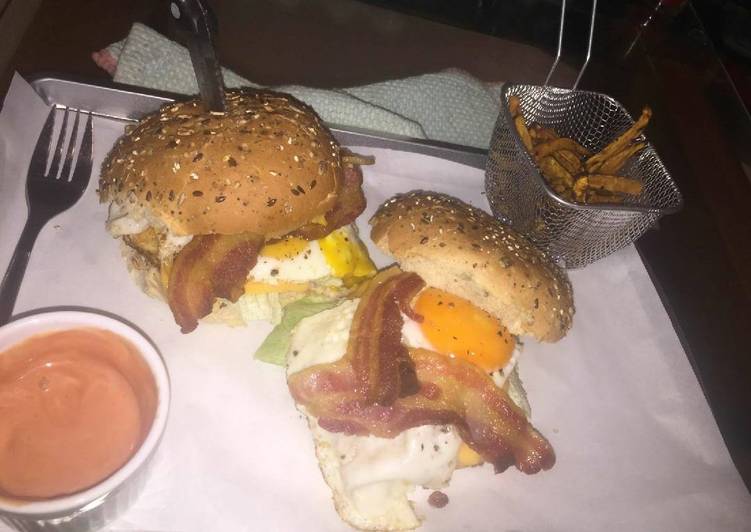
Hey everyone, it’s Louise, welcome to our recipe page. Today, we’re going to prepare a distinctive dish, challah. It is one of my favorites food recipes. This time, I am going to make it a little bit tasty. This is gonna smell and look delicious.
My grandmother made Challah for Sabbath, so I was hoping to get the same type she made from this recipe. The bread looked fantastic and was a perfect piture of Challah, but as soon as I tasted it, I. How to Braid Challah for Shabbat, Holidays or Anytime.
Challah is one of the most favored of recent trending foods in the world. It is enjoyed by millions daily. It’s easy, it is quick, it tastes yummy. They are fine and they look fantastic. Challah is something which I have loved my entire life.
To begin with this recipe, we have to first prepare a few components. You can have challah using 9 ingredients and 15 steps. Here is how you cook it.
The ingredients needed to make Challah:
- Take 1/2 oz active dry yeast
- Take 1 tbsp honey
- Prepare 1/4 cup warm water
- Get 3 large eggs
- Make ready 4 tsp salt
- Take 1/2 cup butter, melted
- Make ready 2 cups warm water
- Make ready 7 cups AP flour
- Take 2 egg yolks
I only know one Yiddish phrase (well, two, if you can count farshikkert, which is a pretty awesome way to say someone is three sheets to the wind), but conveniently, it is my favorite. Bringing your challah to a dinner party? Transport uncovered on someone's lap (we call this person the Guardian of the. Challah isn't as finicky as brioche because challah's lower hydration level makes it less prone to collapsing.
Steps to make Challah:
- Whisk together the first 3 ingredients. Note: when baking recipes say 'warm water' they usually mean around 100F, maybe a bit higher. I usually just run water over my wrist until it feels a little warm.
- To a separate bowl, add salt and eggs. Whisk in the melted butter and 2 cups warm water.
- Whisk the second mixture into the first, the butter and eggs into the yeast.
- Stir in the AP Flour. The dough should be pretty gooey. Once the flour is completely incorporated, put a moist towel over it and set it in a warm place for an hour or two, until it doubles in size.
- Now for the tough part, forming the loaves. Turn out your big lump of dough onto a lightly floured surface and cut it into 6 pieces of roughly equal size. Place 3 of the balls back under the moist towel.
- Grab 2 baking sheets, line them with tin foil, and rub a little butter on each piece of foil. This is mostly to keep your dough from sticking when you form it.
- Take each of the 3 balls of dough and roll them into long strands, 15"-17". Add little dustings of flour to keep your dough from sticking. As you finish rolling the dough strands, line them up on one of the greased sheet trays. The strands should be of equal lengths.
- Join the strands at one end by sorta folding them under and squishing them together. Then, braid them. Right strand over middle, left over right, middle over left, etc. until you reach the end of the strands. Fold the terminal end over and squish it a bit as you did with the beginning. This can take some practice. Don't beat yourself up if it's not perfect.
- Repeat with the remaining dough balls and the other baking sheet.
- Cover each formed loaf with a moist towel. You should probably do a little dusting of flour before putting the towel on top to keep it from sticking. Set it aside for an hour or so in a warm spot.
- Preheat the oven to 325F.
- Whisk up the egg yolks with a little bit of water and use a pastry brush to coat the first loaf.
- Bake the first loaf for 10 minutes, then bump up the temperature to 425f. Bake for another 10-15 minutes. At this point, it should have a really nice golden sheen. Pull it out and put the oven back to 325f.
- Once the oven has cooled, repeat the process with the second loaf. Egg wash, low bake, high bake.
- Let your bread cool a bit, but not too long. If I were you, I'd break into the first loaf while it's still hot. Fresh bread and butter, yes!
Varieties of challah often involve creating different shapes or adding various flavorings. Challah (/xɒlɑː/; Hebrew: חלה [χa'la]), plural: challot /xɒloʊt/ or challos /xɒləs/, is a special Jewish braided bread eaten on Sabbath and Jewish holidays. The name challah comes from the biblical requirement, hafrashat challah—separating challah. The first time I made challah I nearly cried. I was expecting instant success because I did everything right.
So that’s going to wrap this up for this exceptional food challah recipe. Thank you very much for reading. I’m sure that you will make this at home. There is gonna be interesting food in home recipes coming up. Don’t forget to save this page in your browser, and share it to your loved ones, colleague and friends. Thank you for reading. Go on get cooking!


